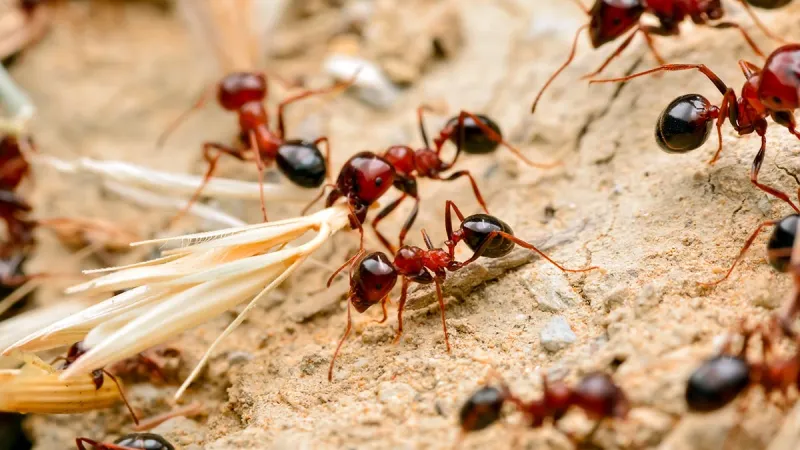
Fire Ants Information

Fire Ants
More about Fire Ants
Fire ants are a type of ant species known for their aggressive behavior and painful sting. These reddish-brown insects are commonly found in various parts of the world and have unique characteristics that make them both fascinating and formidable.
Fire ants belong to the Solenopsis genus, which is a group of stinging ants that are known for their ability to inflict painful stings. There are over 280 known species of Solenopsis, but the most well-known and notorious species are Solenopsis invicta and Solenopsis richteri, commonly known as the red imported fire ant and black imported fire ant.
One of the most remarkable aspects of fire ants is their complex social structure. Fire ants live in large colonies that can consist of hundreds of thousands to millions of ants. Each colony has a queen, who is responsible for laying eggs and reproducing, male ants whose main purpose is to mate with the queen and female worker ants who perform various tasks such as foraging, caring for the brood, and defending the colony.
Fire ants are known for their aggressive and territorial behavior. When their colony is threatened, fire ants can quickly mobilize and attack intruders, including other ants, insects, and even larger animals. Fire ants are also known for their painful sting, which can cause a burning sensation and result in red, itchy bumps on the skin. Some people may even experience severe allergic reactions to fire ant stings, which can be life-threatening.
In addition to their aggressive behavior, fire ants are also known for their remarkable adaptability. They are able to colonize a wide range of habitats, including grasslands, forests, agricultural lands, and urban areas. Fire ants are highly efficient foragers and can consume a wide variety of food, including insects, small animals, seeds, and even carrion. They are also capable of forming mutualistic relationships with other insects, such as aphids and mealybugs, by protecting them from predators and in return, obtaining honeydew, a sweet secretion that these insects produce.
Fire ants have a unique anatomy that allows them to be highly effective in their foraging and defense strategies. They have strong, sharp mandibles that they use to capture and subdue prey, as well as powerful stingers located at the end of their abdomen that they use to deliver venomous stings. Fire ant venom contains alkaloids and proteins that can cause pain, inflammation, and other physiological responses in their prey or victims.
The life cycle of fire ants starts with the queen laying eggs, which hatch into larvae. The larvae then go through a pupal stage before emerging as adult ants. The time it takes for fire ants to go from egg to adult can vary depending on factors such as temperature and food availability. Once the adult ants emerge, they take on different roles within the colony, with some becoming workers, others becoming males, and a select few becoming future queens.
Having a fire ant infestation is a major concern. Get the right pest control treatment before fire ants are given the chance to invade your home.


